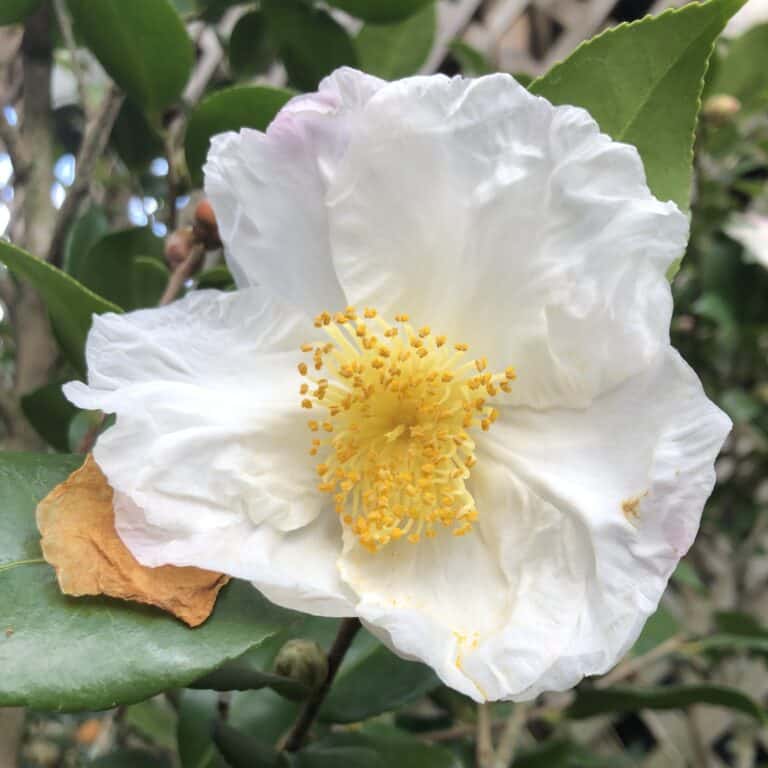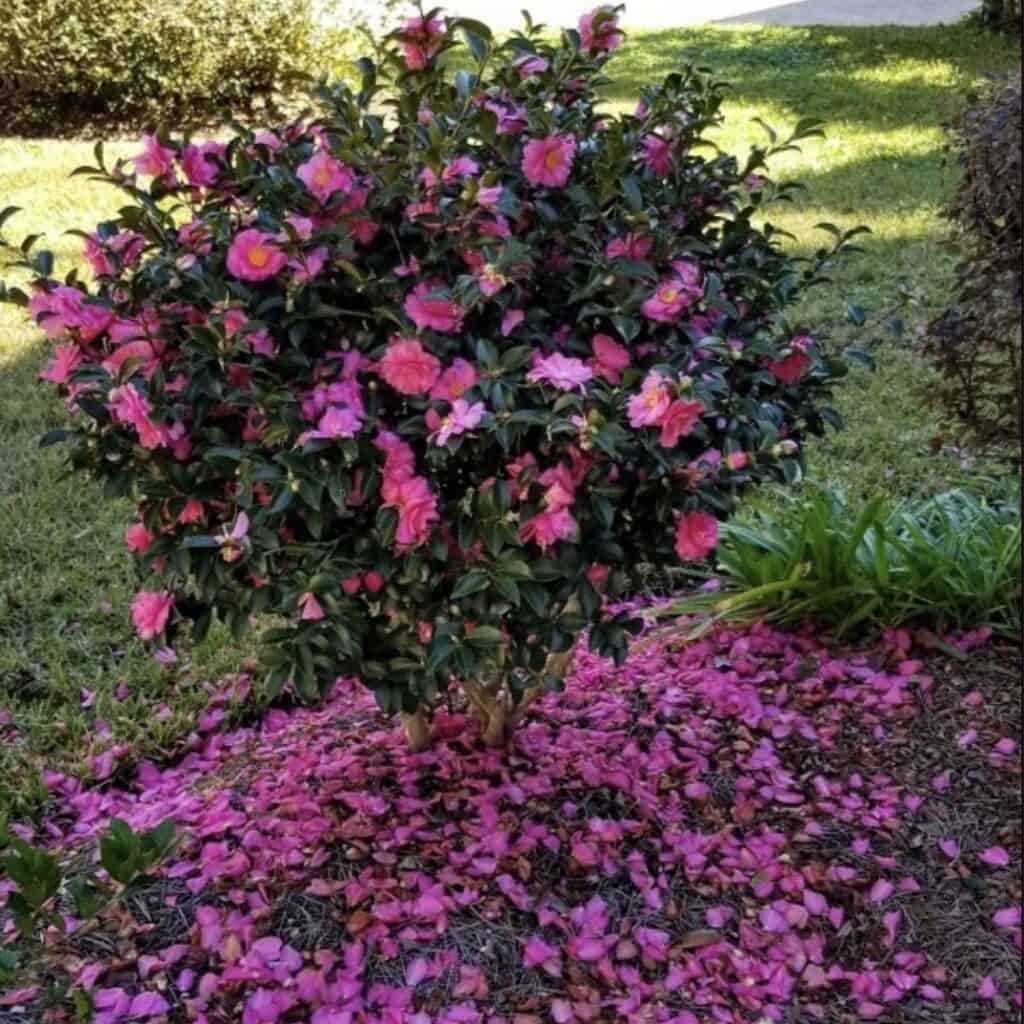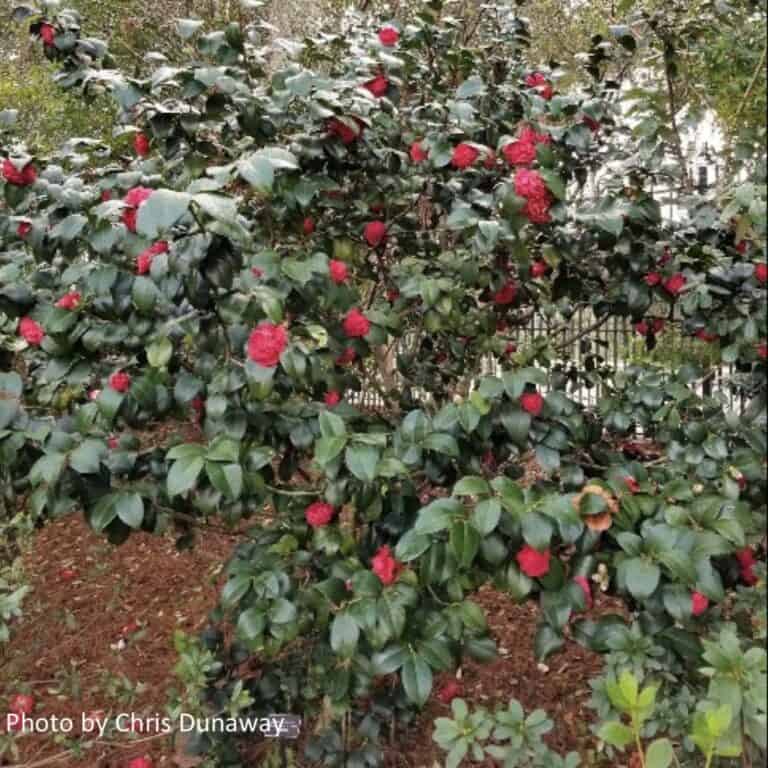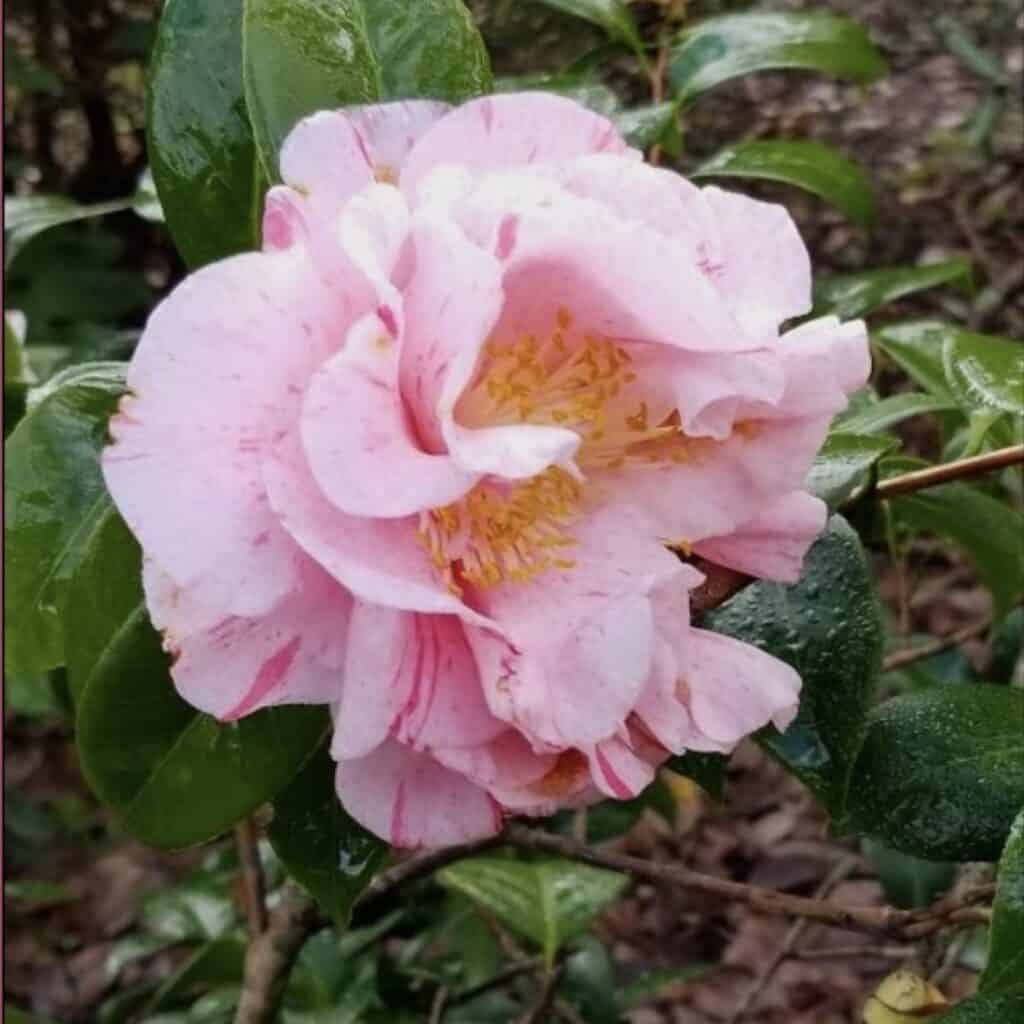The colors are extraordinary of this reliable hardy shrub that blooms throughout the cool-season in New Orleans. Let’s get acquainted with the Camellia japonica.
Camelia japonica is in bloom now and may be planted during this time, Camellias (Camellia japonica) begin to bloom in November and continue through the winter until spring. Camellia japonica is a long-lived evergreen shrub and is a native of China and Japan. Camellia japonica has been a very popular flowering shrub in New Orleans since before the Civil War. [Featured image: ‘Carter’s Sunburst Pink’ Camellia japonica]
Camellia japonica has leathery, dark shiny green leaves. Large, red, pink, white or variegated flowers up to five inches across. The blooms are single, partly or completely double. Relative growing shrub has average height/width of 8 X 5 feet, can reach 20 X 15. Camellia japonica has a number of landscapes uses, espalier,
containers, specimen shrub or old garden shrub. Many enjoy floating the blooms in water for a lovely table display. This is a long-lived upright plant with a long blooming season. It does best in shaded, understory conditions. Plant in fertile
soils, which are porous, well-drained and acidic soil with pH of 5.0 to 6.0. Mulch plants with 2 to 3 inches of material. Camellias are drought tolerant once well established.
Fertilize camellias with azalea-camellia fertilizer or complete fertilizer such as 2-5-15 or similar at one-half pound per well-established plant. Apply fertilizer in late winter just before new growth begins. Prune after the plant blooms. Camellia japonica may be thinned in the center, for good air circulation. Propagate by seeds, grafting, and cuttings from current season’s growth during summer.
‘

`‘Gulf Glory’
Camellia sasanqua
Camellias can be great sources of pollen for foraging honey bees. Look for varieties with prominent visible stamens. The male stamens are the reproductive part of a flower and are visible as the yellow dots in center of the flower. (See featured image ‘Carter’s Sunburst Pink.’) Scale is a serious insect problem and may require annual spraying. Petal blight can also be a problem on warm, wet days when camellias are in bloom.
Camellia sasanquas have smaller flowers and leaves compared to their cousins Camellia j aponica. The leaves and flowers of camellias look waxy. Some flowers are fragrant.
Use this evergreen as a shrub or small tree. They are well suited as a hedge. Plant it in sun or part-shade in loose, acidic soil. Camellia sasanqua should be planted a bit above ground in our area for good drainage. Because of the shallow roots, mulch the roots to prevent weeds and help retain moisture and cool the soil. Fertilize in late winter using azalea/camellia fertilizer or all-purpose fertilizer like 13-13-13.

‘Pink Snow’
Camellia sasanqua

‘Professor Charles S. Sargent’
Camellia japonica
Freezes can ruin the flowers, but the plant should be fine in our area. Scale insects may be a problem and need to be sprayed with appropriate insecticide. Sometimes old plants may have some dieback when they are growing under stressful conditions.
Resources – LSU AgCenter:
Camellias by Chris Dunaway
Camellias are wonderful for winter flowers by Dr. Heather Kirk-Ballard
Camellias are outstanding in containers by Dan Gil

By Karen Blackburn
Master Gardener of Greater New Orleans
Photo credits:
Chris Dunaway, LSU AgCenter
Karen Blackburn

